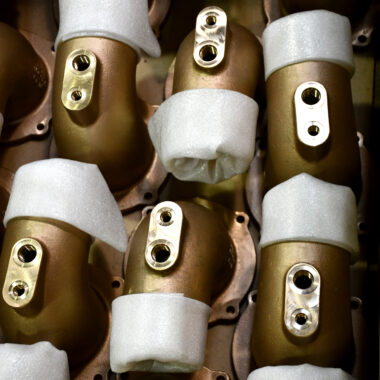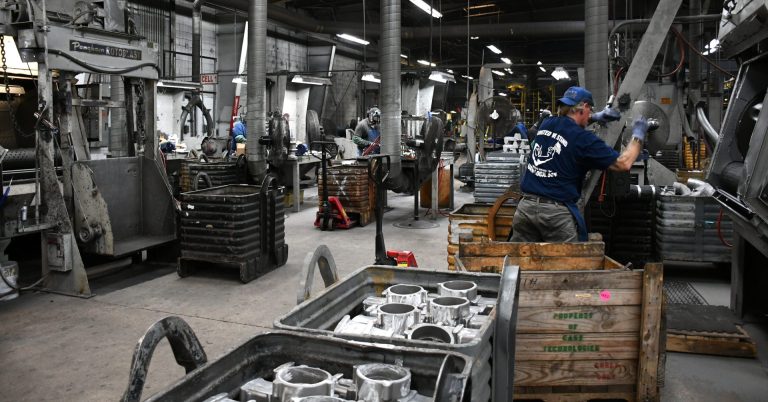Aluminum Casting Demystified: Key Strategies for Success
Aluminum Casting Demystified: Key Strategies for Success
Blog Article
Dive Into the World of Aluminum Spreading: Recognizing the Various Techniques
Aluminum spreading is an essential procedure in the production industry, with various methods used to create intricate and exact elements. Comprehending the different methods made use of in light weight aluminum spreading can give valuable insights right into the abilities and constraints of each method. From the typical sand spreading method to the advanced die spreading procedure, each technique supplies unique benefits relying on the requirements of the task. Exploring these diverse methods can use a thorough view of the opportunities within the world of light weight aluminum spreading and how each method adds to forming the modern manufacturing landscape.
Sand Spreading Approach
Sand spreading, a widely-used technique in light weight aluminum spreading processes, includes creating mold and mildews made from compacted sand for putting molten metal. This technique is highly flexible and cost-efficient, making it a prominent choice for different markets. The procedure starts with the development of a pattern, generally made of wood or steel, which is after that pushed into the sand to leave a perception. The sand mix, normally silica sand combined with a binder like clay, is snugly packed around the pattern to develop a mold and mildew cavity. When the mold and mildew prepares, it is securely placed in a flask and molten aluminum is put right into the dental caries.
After the steel has actually cooled down and strengthened, the sand mold is damaged away to reveal the aluminum casting. Sand spreading permits for the manufacturing of complicated forms and huge parts that may be difficult or expensive to create making use of various other techniques. It is likewise a sustainable strategy as the sand can be reused and used multiple times, minimizing waste in the casting procedure.
Long-term Mold And Mildew Technique

One significant advantage of the Irreversible Mold Technique is the improved dimensional precision it offers. The metal mold permits for tighter tolerances and finer details in the last aluminum spreadings compared to sand spreading approaches. This precision makes it a recommended option for applications where limited dimensional control is vital, such as in the aerospace and auto sectors.

Die Casting Refine

Investment Casting Strategy
Utilizing a precision casting method, Financial investment Casting Method involves creating elaborate aluminum parts by putting liquified steel into a ceramic mold and mildew. This procedure, likewise understood as lost-wax spreading, starts with the creation of a wax pattern of the preferred component (aluminum casting).
The next action involves putting the liquified light weight aluminum right into the ceramic mold. The light weight aluminum fills up the cavity left by the wax pattern, taking its form exactly. This technique is preferred for its capacity to create complicated shapes with high accuracy and a smooth surface coating. Investment casting is generally utilized for producing parts in industries where limited tolerances and complex styles are called for, such as aerospace, vehicle, and medical devices. The flexibility and accuracy of the Financial investment Casting Technique make it a beneficial strategy on the planet of light weight aluminum casting.
Lost Foam Spreading Technique
Having actually discovered the elaborate accuracy of Investment Casting Technique, the focus currently shifts to the cutting-edge method of Lost Foam Casting in light weight aluminum component production. Lost Foam Spreading, additionally known as evaporative pattern spreading, is a modern-day method where a foam pattern of the wanted component is produced and then coated with a refractory product.
Additionally, Lost Foam Spreading is an economical procedure as it lowers the requirement for cores and allows Recommended Site for the manufacturing of light-weight parts. Despite its advantages, Lost Foam Spreading calls for mindful control of the casting process to make certain and stop flaws top quality elements.
Conclusion
To conclude, light weight aluminum casting provides a variety of techniques such as sand casting, irreversible mold and mildew technique, pass away casting, investment casting, and shed foam casting. Each technique has its very own advantages and applications, making light weight aluminum casting a functional and commonly utilized process in different sectors. Comprehending the distinctions between these approaches is crucial in picking one of the most appropriate casting technique for specific production needs.
Sand spreading, weblink a widely-used method in aluminum casting procedures, includes developing mold and mildews made of compressed sand for putting liquified metal. aluminum casting.The Long-term Mold Strategy, like sand casting, is one more widespread method utilized in light weight aluminum spreading procedures, using distinctive advantages in terms of mold and mildew reusability and dimensional precision. The metal mold and mildew permits this website for tighter resistances and finer details in the last light weight aluminum castings compared to sand spreading techniques. The two main types of die casting are chilly chamber die casting and hot chamber pass away casting, each appropriate for various types of light weight aluminum alloys.In conclusion, light weight aluminum casting supplies a range of approaches such as sand casting, irreversible mold strategy, pass away spreading, financial investment casting, and lost foam casting
Report this page